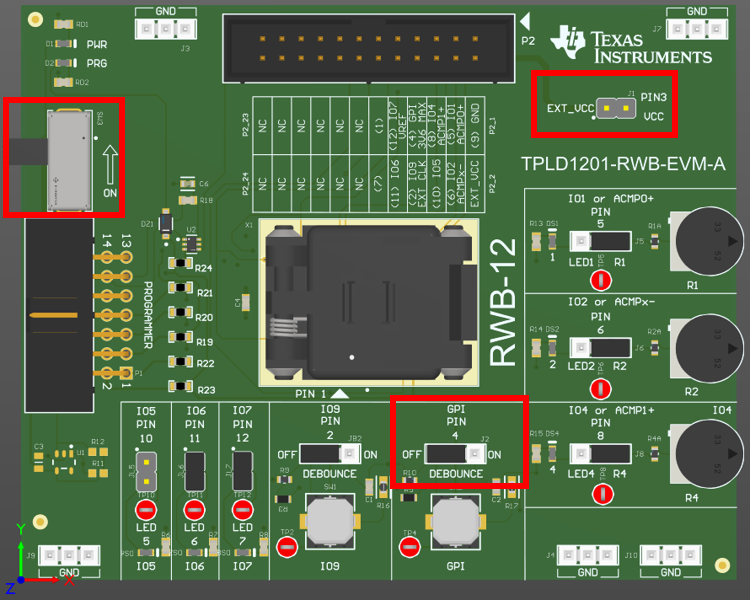SCEU027B November 2023 – October 2024 TPLD1201
PRODUCTION DATA
3.2.1 TPLD1201-RWB-EVM Setup for Programming
Make sure that the following conditions are met:
- Set SW3 to the ON position.
- Set the GPI Pin 4 jumper (J2) to the OFF position or remove the jumper
- Remove the EXT_VCC (J1) jumper
- Disconnect P2 from any external system
 Figure 3-2 Components Considered in
Programming Setup
Figure 3-2 Components Considered in
Programming Setup